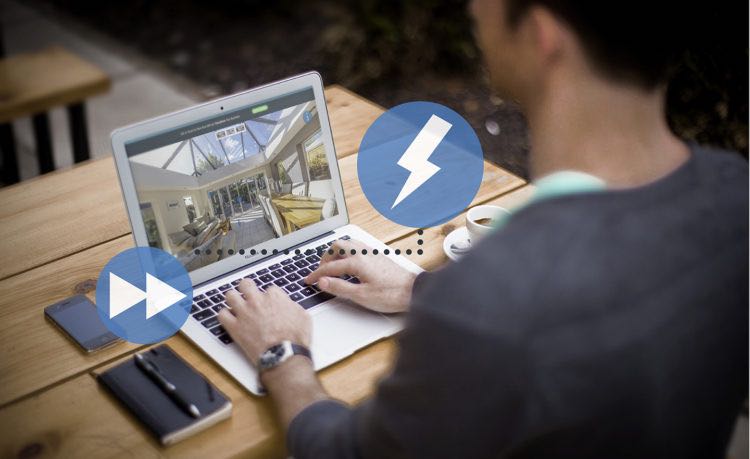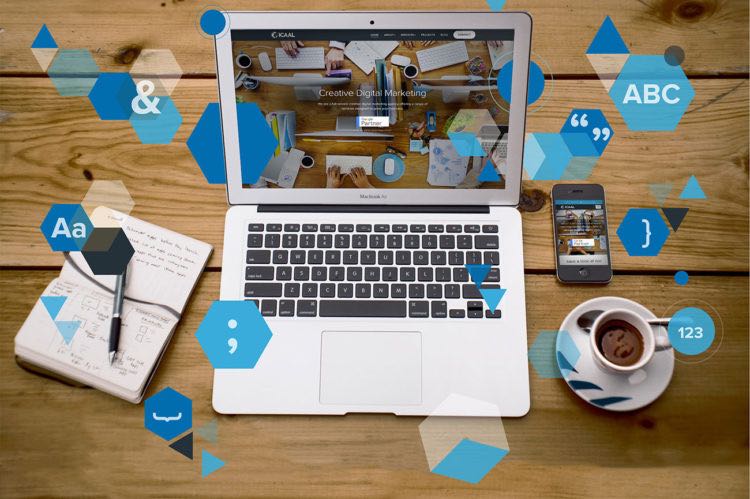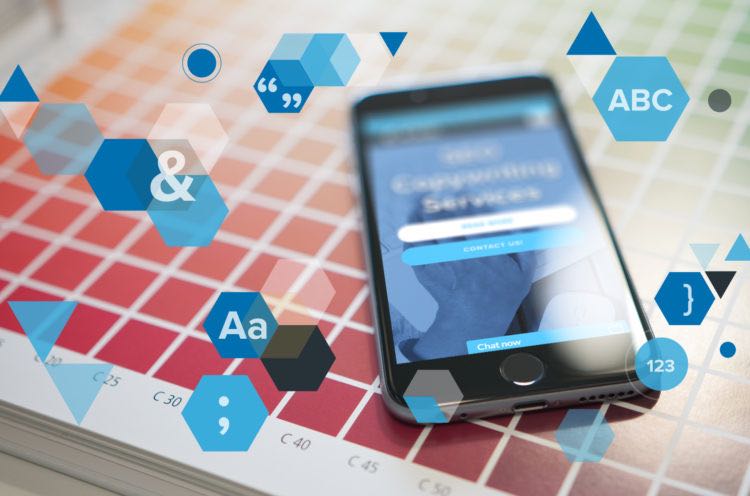Is your web design scaring away potential customers?
A ghastly web design could be sabotaging your chances of building a well-ranking website, robbing you of precious clicks and leads.
There’s nothing wrong with a little fright on Halloween. It’s the only time of year when it’s perfectly acceptable to trespass a stranger’s property and make a non-negotiable demand.
Spooking however, should be coming from little vampires and ghosts – not your website.
Make sure you’re not scaring off visitors with these spine chilling mistakes.
Fright 1: Scary Slow Site Speeds
For consumers browsing the internet, nothing is more frightening than a slow-loading website.
You’d think Netflix buffering would have taught us about patience but there’s nothing scarier than a page that won’t load correctly.
If your site speed means your website is as dead as a grave yard, then you might want to hook that zombie up with some lightning speed.

Many of us expect a web page to load within two seconds or less and will abandon a website that takes longer to load.
Slow page speed can affect everything from sales to sign-ups, scaring away those potential leads.
Safe to say, there’s a lot riding on your site’s load time and overall web design. Use Google’s Page Speed Insights to check your website’s performance.
Or check out our web hosting services to benefit from faster loading times.
Fright 2: Terrifying User Experience
What kind of an experience is your website offering your visitors?
Think back to the last shop you visited. How was the experience? Did the layout and atmosphere invite you in? Or did the overly crowded aisles and overly-intrusive sensory elements affect your shopping experience?
A customers’ in-store experience largely determines whether they will visit that shop again. It’s fair to say that a consumer’s experience on your website is no different.
Your website’s navigation, menu and design will affect how consumers use your site and how long they stick around. If your web design has nightmare navigation and poor visuals, your visitors won’t be staying for long.
Fright 3: Invisible Calls To Action
Does your website have ghostly calls to action?
When users land on your website, they need to know where to find a contact button, how to navigate your menu and how to purchase a specific product.
Users should know what to expect. No surprises or hidden skeletons.
Is your website encouraging users to stay on?
Fright 4: Inactive Blog Posts
A blog is a great way for customers to engage with your business. A quality blog shows that you have authority over your niche and that you care about your customers experience.

Consistency is the key to growth. If your last blog post was from 2012 then it’s likely to give users the Goosebumps. Don’t turn users away with inactivity.
While committing to a blog and posting regularly is important for appearance sake, it’s also a proven way to rank better in search engines such as Google.
Not blogging consistently can actually hurt your web traffic.
Fright 5: Text Heavy
Avoid huge blocks of text. No matter what you’re selling, users won’t want to read an essay about it. Break up copy and keep it clear and concise. It needs to be easy to read and scan.
Think about breaking up content into digestible bites and don’t forget to add engaging graphics to keep pages visually appealing.
Fright 6: Not Mobile Friendly
Did you know that the majority of web traffic now comes from mobile devices? People carry out searches and look up websites on their smartphones.
It’s quick, easy and can be done on-the-go. If your website is not mobile friendly, then you could be alienating a lot of potential customers.

Your website should offer an experience that motivates your visitors. If users are having to adjust the screen or squint their eyes to read content, you’re not giving them the best experience.
If your website doesn’t translate to mobile, then users are going to move onto one that does.
You can optimise the experience for mobile users by building a mobile-friendly site, using a responsive design and simple navigation for faster loading times.
Fright 7: Too Many Stock Photos
If you have a unique product or great story to tell, then you will want to tell it with words and images that are unique to your company.
An occasional stock photo here and there is ok but relying too heavily on them can make your website look cheesy and outdated.

Think back to the last time you visited a ‘Customer Service’ page or ‘Contact Us’ page.
Did it have a picture of a customer service agent? Did this person look like they actually worked for the company, or could you tell it was a generic stock photo?
Relying too heavily on stock photos can make your website look cheesy and inauthentic. Fake looking images certainly won’t encourage users to make contact or follow through to purchase.
The initial higher cost of custom photography is well worth the investment because no matter how professional the stock photo, it will always be someone else’s concept.
One of the greatest benefits to having custom photography is that you get to show visitors something unique. When users visit your website for the first time, you want their immediate reaction to be ‘wow.’
View our Photography services.
Experts In Web Design
Our web design experts know what works when it comes to website design and development.
If your website needs reviving, drop us a message or call us directly on: 023 8033 2675.
